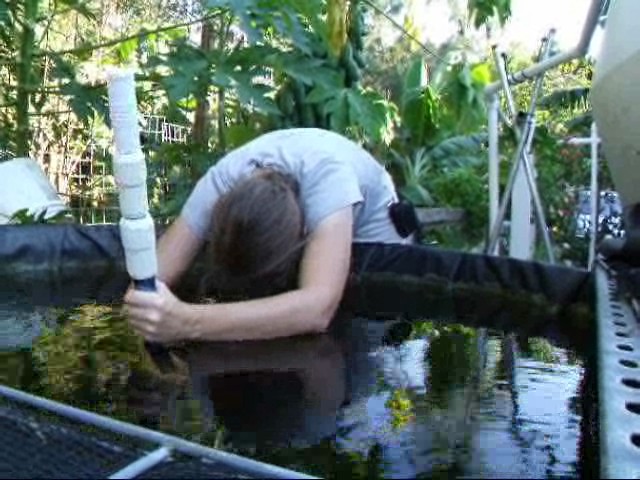In Aquaponics the perfect balance would be to feed the fish to have the fish feed and source water provide all the necessary nutrients for the bio-filtration and the plants, however in the real world it can sometimes be difficult to achieve such a perfect balance. When system water pH is high or the source water doesn’t provide any iron, it is sometimes necessary to supplement things like Iron. When supplementing Iron it is often beneficial to use chelated iron because it remains more available to the plants even at higher pH. The type of chelated Iron can also affect the availability of the iron to the plants. EDTA Iron is the least beneficial to the plants with DTPA providing better availability and EDDHA providing the best crop yield, however at the greatest cost.
In Aquaponics the plants only need about 2-3 ppm of Iron available in the water or planting media. It is not desirable to over do the amount of iron. For backyard growing I would usually recommend adding enough to keep iron deficiency at bay by keeping an eye on the most iron deficiency sensitive plants for the first signs of when you need to add iron and learn about how much to dose every few weeks to keep the deficiency from showing up. If one wishes to get more specific than that, Iron test kits can be found for under $100. Commercial scale operations will need to invest in the water chemistry testing supplies to be able to track iron levels and dose accordingly.
Iron levels and dosing schedules are not something that can be dictated by a book since the source water, fish feed, crops grown and even the system type/media will affect the water chemistry and iron levels.
Iron deficiency show up as yellowing of the leaves while the veins remain green. Signs of Iron deficiency show up on newer leaves first. (If newer leaves are green while the older leaves are showing chlorosis then it is probably not Iron deficiency.





After reading this was curious if you knew what the Iron Chelate found in the Maxicrop plus Iron is? I’ve searched The Maxicrop site, but did not find any details on the Iron Chelate method used in the product.
I have found through other searches that the Iron (Fe 2) componet of Maxicrop is ferrous sulphate. How does this fair with the other forms of Chelated Iron in Aquaponics?
Just curious. Still learning here 🙂
The Iron in Maxicrop plus Iron is NOT Chelated Iron.
Ok, thanks the reply.
Would you consider the ferrous sulphate found in the Maxicrop plus iron a safe product to use in aquaponics as a method for iron supplementation?
It is probably safe enough.
Just not very effective especially if your pH is high.
I have read that although EDDHA is non toxic, some sources may contain heavy metals such as lead. Do you know of any EDDHA product that does not contain heavy metals?
I see no reason some one would want to use EDDHA alone. It is a chelating agent. This topic is about Iron. Iron is considered a heavy metal. I don’t carry EDDHA chelated iron because it is very expensive. The chelated iron I carry is DPTA.
As for impurities in a product, you would have to contact the company to see if there is a guaranteed analysis for the product you want so you can judge if the amounts of other metals are acceptable to you.
TC:
Here in Central Texas, our water is extremely Alkaline (as much as 9.0 in some areas). With PH ranges consistently above 8.0, I would suggest EDDHA which is available to plants in those PH ranges. The DTPA will work, but not as effectively.
If I could get a good price on the EDDHA I would be offering it but all my systems have consistently dropped into the mid 7 range when I have fish eating well and NO anaerobic zones or algae problems. Best bet might be to adjust your water pH before using it in the system so that you are not dealing with a pH between 8 and 9 but if EDDHA is available in your area and you have a system running with a pH above 8 then using EDDHA is going to be a better choice for those really extreme pH situations.
If the Ph is kept around 6.2-6.4 regularly would ferus sulfate be more effective, or would it still be better to use chelated Iron?
If your plants are showing signs of iron deficiency, a form of chelated iron is still probably the better form to use.